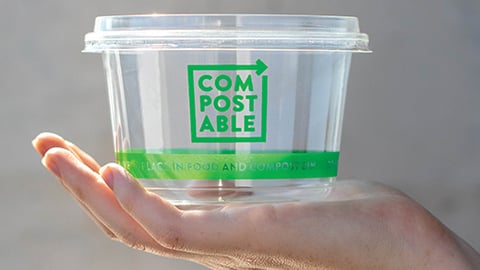3 Ways to Start Tackling America’s Broken Recycling System
If we were to completely reimagine the U.S. recycling system, what would it look like?
There’s no question that recycling in America is broken. There’s also no question that we must do everything we can to save it. But the fix isn’t going to be easy or quick, and it’s going to take a lot of work from all stakeholders. We’ve got three ways to start tackling this critical problem:
1. Gather Badly Needed Data to Chart a Path Forward
Do you know how many recycling systems there are in the United States? How about the average recycling rate in your hometown? Do you know what percentage of waste in your state gets landfilled?
You likely don’t have the answers to those questions. In fact, no one does. There’s disagreement even on the recycling systems that exist. The EPA says that there are nearly 10,000, but The Recycling Partnership estimates it at closer to 20,000.
Without data, we can neither identify the trouble spots to address, nor can we find the success stories to replicate. The future of recycling requires sound data as its guide.
2. Clear Up Consumer Confusion
For every recycling system in the United States, there’s a distinct set of rules and regulations, often contradictory to neighboring systems. For example, I live in Arlington Country, Va., where you can recycle your pizza box. But in neighboring Fairfax County, that same pizza box isn’t accepted.
And that’s just for single-family homes. When you look at the varying policies for apartment houses, offices, schools, supermarkets and restaurants, the rules get even murkier.
This patchwork of policies means low participation rates and high levels of contamination in residential recycling, undermining the investment and innovation that CPG companies have put into making their packaging more recyclable. All of the largest 25 CPG companies have made commitments to improving their packaging, including fully recyclable packaging or more recycled content. However, a recyclable package makes a difference only if it is, in fact, recycled.
If we want a recycling system that works, it needs to be uniform and simple to understand. Our research found that only 4% of consumers said that recycling wasn’t confusing. How can we possibly succeed when so many consumers aren’t clear on how to participate?
We need national, or at least regional, uniform standards that can provide clarity to boost rates. The state of Delaware is a great example of the benefits of standardization. Its Universal Recycling Law notes that “it is in the public interest to develop a comprehensive statewide system of recycling and resource recovery, which maximizes the quantity of solid waste that can be recovered, reused or converted to beneficial use.”
Standardized recycling allows programs to scale, keeping valuable packaging material out of landfills and having a positive impact on the environment.
3. Make Sustainability Financing Sustainable
Any functional and successful system is going to require substantial investment. A decade of underinvestment and a rollercoaster ride of global markets for recyclables means a need to double down on modern U.S. recycling infrastructure.
There’s a shared responsibility among stakeholders to finance a lasting system. I believe that every stakeholder in the packaging ecosystem — from the materials manufacturers to the CPG industry to the waste and recycling sectors — will step forward to create a long-term solution.
This won’t happen overnight, but the CPG industry is committed and ready to work with all willing stakeholders to create a system for the 21st century, one that benefits consumers, businesses and the environment alike.







